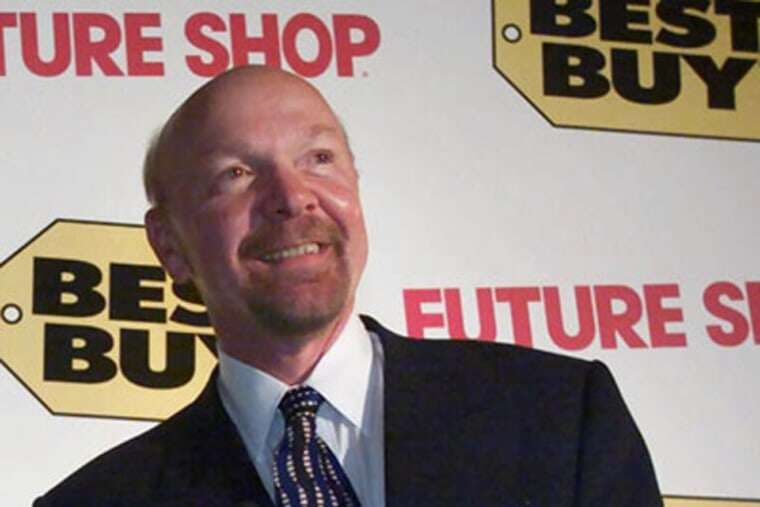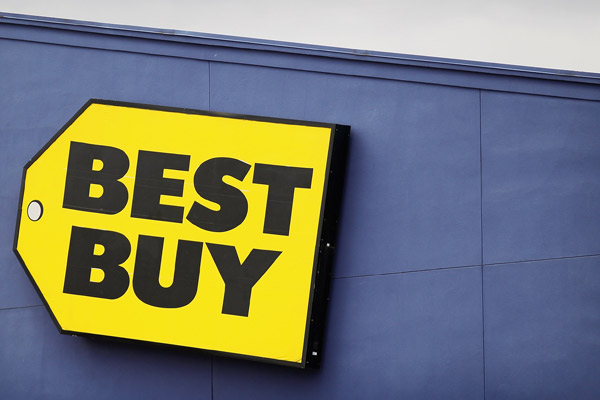In today’s fast-paced world, where technological advancements continually reshape our lives, finding a reliable source for all our electronic needs becomes paramount. Best Buy, a renowned retail giant, has emerged as a leader in the consumer electronics industry, providing a comprehensive range of products, expert advice, and exceptional customer service. With its impressive history and commitment to innovation, Best Buy has become synonymous with excellence, earning the trust and loyalty of millions of customers worldwide.
Best Buy was founded in 1966 by Richard M. Schulze and James Wheeler in Minnesota, USA. Initially known as Sound of Music, the company began as a small audio specialty store. Over the years, the business underwent significant transformations, expanding its product offerings and adopting a new name, Best Buy, in 1983. This rebranding marked a turning point, as the company shifted its focus towards becoming a one-stop destination for consumer electronics.
Best Buy offers an extensive array of electronics, catering to diverse customer needs. From cutting-edge smartphones and laptops to home appliances, gaming consoles, home theaters, and smart devices, the retailer boasts a vast inventory of top-quality brands. This broad range allows customers to explore and compare options, ensuring they find the perfect solution for their requirements.
One of the standout features of Best Buy is its Geek Squad, a specialized team of experts who provide technical support and installation services. Whether customers need assistance with setting up a new home theater system or troubleshooting a software issue, the Geek Squad ensures a seamless and hassle-free experience, enhancing customer satisfaction and confidence in their purchase.
Walking into a Best Buy store is an immersive experience in itself. The retail giant has created an environment where customers can explore and interact with the latest gadgets and technology firsthand. Best Buy stores are designed to showcase products in innovative ways, providing interactive displays, demo areas, and knowledgeable staff who are readily available to assist and educate customers.
Best Buy has also embraced emerging trends and incorporated them into their operations. The company recognized the growing demand for online shopping and established a robust e-commerce platform, enabling customers to browse and purchase products from the comfort of their homes. Furthermore, Best Buy has embraced the rise of smart home technology, showcasing connected devices that seamlessly integrate into customers’ lives.
Best Buy’s unparalleled commitment to customer satisfaction, extensive product selection, knowledgeable staff, and innovative retail experiences have solidified its position as a leader in the consumer electronics industry. By consistently adapting to evolving market demands and providing exceptional services, Best Buy has revolutionized the way people shop for electronics. Whether in-store or online, customers can rely on Best Buy to deliver cutting-edge technology and unmatched expertise, making it the go-to destination for all their electronic needs.
History of Best Buy
Best Buy’s history is a story of humble beginnings, strategic acquisitions, and a relentless commitment to customer satisfaction. Let’s dive into the details of Best Buy’s journey, from its inception to its current status as a global retail powerhouse.
Founding and Early Years:
Best Buy was founded in 1966 by Richard M. Schulze and James Wheeler in West St. Paul, Minnesota, under the name “Sound of Music.” The company started as a small audio specialty store that primarily sold high-fidelity stereos. Schulze, a passionate entrepreneur, aimed to provide customers with an unparalleled shopping experience, offering a wide range of audio equipment along with expert advice and exceptional customer service.

Expansion and Rebranding:
Throughout the 1970s, Sound of Music steadily grew its customer base and product offerings. In 1981, the company faced a significant setback when a tornado struck its flagship store, causing extensive damage. However, rather than succumbing to this adversity, Schulze viewed it as an opportunity to rebuild and innovate.
In 1983, Sound of Music underwent a transformative rebranding, adopting the name “Best Buy.” This new name symbolized the company’s commitment to providing customers with the best selection, service, and overall value. The shift in focus from audio specialty to consumer electronics marked the beginning of Best Buy’s evolution into a comprehensive electronics retailer.
Expansion and Acquisitions:
Best Buy’s rapid expansion began in the late 1980s. The company opened multiple stores across the United States, leveraging its customer-centric approach and a growing reputation for quality products and knowledgeable staff. In 1989, Best Buy made its initial public offering (IPO) and began trading on the New York Stock Exchange.
In the 1990s, Best Buy continued its aggressive expansion strategy, primarily through strategic acquisitions. In 1999, the company made a significant move by acquiring the largest consumer electronics chain in Canada, Future Shop. This acquisition provided Best Buy with an entry point into the Canadian market and expanded its reach beyond the United States.
International Expansion and Growth:
The early 2000s witnessed Best Buy’s global expansion. In 2001, the company entered the Chinese market by opening its first store in Shanghai. This move marked Best Buy’s foray into the world’s most populous country, capitalizing on China’s booming consumer electronics industry.
In 2007, Best Buy made a historic acquisition by purchasing the British electronics retailer, The Carphone Warehouse. This acquisition allowed Best Buy to enter the European market and establish a significant presence in the United Kingdom, with plans for further expansion across the continent.
Challenges and Adaptation:
While Best Buy experienced substantial growth and success, the company also faced challenges along the way. The rise of online retail and e-commerce posed a significant threat to traditional brick-and-mortar retailers, including Best Buy. The company recognized the shifting landscape and prioritized its digital transformation.
Under the leadership of CEO Hubert Joly, who joined the company in 2012, Best Buy implemented a turnaround strategy focused on improving the customer experience, optimizing operations, and embracing e-commerce. This included revamping stores, enhancing the online shopping platform, and leveraging data analytics to personalize customer interactions.
Current Status and Future Outlook:
Today, Best Buy is a globally recognized brand with a vast retail footprint. The company operates over 1,145 stores in the United States, Canada, and Mexico, employing a workforce of tens of thousands. Best Buy’s product offerings have expanded to include a wide range of consumer electronics, appliances, computers, home theaters, and smart home devices.
Best Buy has not only survived the digital disruption but has thrived by successfully blending its online and offline presence. The company offers convenient omnichannel shopping experiences, allowing customers to research products online, make purchases through various channels, and seek in-store assistance when needed.
Looking ahead, Best Buy continues to adapt to changing customer preferences and technological advancements. The company remains committed to delivering outstanding customer service, embracing emerging trends, and cultivating strategic partnerships to remain a dominant player in the ever-evolving consumer electronics industry.
Growth Strategy of Best Buy – Evolving with time
Best Buy operates more than 1,000 electronics stores and employs around 125,000 people. That the electronics retailer continues to exist after 56 years of inception is a testimony to management’s ability to reinvent the company for changing times. Best Buy launched when its founders accepted that their regional music store could not compete in the 1980s against the hot retail trend of “big-box” stores offering choice and convenience at low prices.
Best Buy outperformed its preexisting competitor, Circuit City, in selecting locations and keeping pace with technology through the 1990s. As computer technology became more popular and complex, Best Buy began offering services through its Geek Squad, a start-up company that Best Buy acquired in 2002.
When the Great Recession hit several years later, Circuit City went out of business, but Best Buy survived through aggressive cost cutting, including the closing of operations in Europe and China and downsizing at its U.S. corporate headquarters.
It lived to face the new challenge: online retailing.
During the past decade, as Best Buy evaluated its opportunities and threats, it benefited from the loss of some key retail competition—not only Circuit City but also cutbacks at Sears and other department stores selling electronics. Meanwhile, Amazon transformed from a bookseller with a line of CDs into a major low-priced threat to almost every retailer. In 2010, Amazon introduced an app for comparing prices across retailers, and Best Buy suddenly found that it was losing comparisons despite its low-price strategy. On top of that, Amazon offered the convenience of shopping anywhere and anytime.
In the face of this major threat, Best Buy needed more than low prices.
It invested in better distribution and inventory management to keep up with Amazon’s superior customer fulfillment. Best Buy improved employee benefits and training, to provide better customer service in stores despite the stiff competition for talent in the labor market. Best Buy also wanted to give consumers something that Amazon didn’t offer. An online retailer can offer low prices and fast delivery, but the human touch from an online company is rare. Best Buy’s executives saw an opportunity to deliver that human touch.
Management opted for a differentiation strategy. Best Buy would offer more services; building on its experience with the Geek Squad, it began offering a service called In-Home Advisor. Best Buy had convinced consumers that calling Geek Squad was like having their own tech support team. In-Home Advisor added an experience like having a technology consultant to advise them in using electronics to improve their lifestyle. The service includes free home visits lasting 60 to 90 minutes. Best Buy is betting that building long-term relationships with households will be profitable in the long run.
Best Buy trains its advisers to fill the role of consultant by putting consumers at ease and quietly appraising what technologies are in use and what potential there is for modernizing. Rather than pitching ideas, consultants learn to ask about preferences and needs. In addition, the company pays advisers a salary, removing the pressure to close sales in order to earn commissions.
Best Buy also seeks distinctive products to sell. It was a leader in opening boutique-style store departments for Apple, Samsung, and Microsoft; those brands pay rent and use their own salespeople or train Best Buy associates. This way, Best Buy can improve customer service while increasing revenues.
Another move was to form a joint venture with Amazon. The two rivals agreed to sell a line of smart televisions equipped with Amazon Fire TV and Alexa voice assistant, available only from Best Buy and Amazon. Best Buy also sells service packages, including the Total Support Tech program, which costs $199 for a year of tech support from the Geek Squad for any electronics product purchased from any retailer. For elderly customers concerned about their health and safety, a program called Assured Living equips them with remote monitoring and communication.
In conclusion, Best Buy’s growth strategies encompass a combination of expansion, acquisitions, customer-centricity, technological advancements, omnichannel integration, personalized experiences, and a focus on emerging trends. By continuously adapting to changing market dynamics and consumer needs, Best Buy has successfully positioned itself as a leader in the consumer electronics retail industry.
Marketing Strategies of Best Buy
Best Buy employs a range of marketing strategies to drive customer engagement, promote brand awareness, and maximize sales in the competitive consumer electronics retail market. These strategies encompass targeted advertising campaigns, effective use of digital marketing channels, customer loyalty programs, strategic partnerships, and community engagement initiatives. Let’s explore these marketing strategies in detail:
Targeted Advertising Campaigns:
Best Buy develops targeted advertising campaigns to reach specific customer segments and promote its product offerings. The company leverages various media channels, including television, radio, print, and digital platforms, to showcase its range of electronics and services. These campaigns highlight the latest technology trends, exclusive deals, and the unique value propositions of Best Buy, aiming to capture the attention and interest of its target audience.
Digital Marketing and E-commerce:
Best Buy places significant emphasis on digital marketing to connect with tech-savvy consumers. The company employs search engine optimization (SEO) strategies to ensure its website ranks prominently in search engine results. Best Buy also utilizes search engine marketing (SEM) and pay-per-click (PPC) advertising to target specific keywords and drive traffic to its online store.
Furthermore, Best Buy engages customers through email marketing campaigns, personalized offers, and remarketing efforts to enhance customer retention and foster repeat purchases. The company leverages social media platforms to engage with customers, share product information, provide customer support, and run targeted advertising campaigns. Best Buy’s robust e-commerce platform allows customers to conveniently browse, compare, and purchase products online, facilitating seamless transactions and enhancing the overall customer experience.
Customer Loyalty Programs:
Best Buy operates a highly successful customer loyalty program called “My Best Buy.” This program offers various tiers (such as Elite and Elite Plus) that provide additional benefits and rewards to frequent shoppers. Members earn points for their purchases, which can be redeemed for discounts, exclusive offers, and access to special events. The program also offers personalized recommendations and early access to sales, enhancing customer engagement and fostering loyalty.
Strategic Partnerships and Exclusive Offers:
Best Buy forms strategic partnerships with renowned brands and manufacturers to offer exclusive products and services. These collaborations enable Best Buy to showcase and sell limited-edition items or gain early access to new product launches. By offering exclusive deals and unique partnerships, Best Buy differentiates itself from competitors and provides customers with added value, driving foot traffic and online sales.
Community Engagement and Corporate Social Responsibility:
Best Buy actively engages with local communities through its corporate social responsibility initiatives. The company supports educational programs, technology literacy, and workforce development initiatives. By investing in local communities, Best Buy enhances its brand reputation, builds customer trust, and establishes a positive connection with its target audience.
In-Store Experience and Expert Advice:
Best Buy places a strong emphasis on providing an exceptional in-store experience for customers. The company ensures that its stores are inviting, well-organized, and staffed with knowledgeable employees. Best Buy’s expert staff members, known as Blue Shirts, offer personalized advice, product demonstrations, and technical expertise, helping customers make informed purchasing decisions. This focus on in-store experience and expert advice fosters a sense of trust and credibility, differentiating Best Buy from online-only retailers.
Customer Reviews and Recommendations:
Best Buy actively encourages customers to provide reviews and ratings for products on its website. These customer reviews serve as social proof and influence the purchase decisions of potential customers. Best Buy also provides a platform for customers to share their experiences and recommendations, helping to build a community and facilitating peer-to-peer interactions.
Best Buy employs a comprehensive range of marketing strategies to engage customers, build brand awareness, and drive sales. By leveraging targeted advertising campaigns, digital marketing channels, customer loyalty programs, strategic partnerships, community engagement initiatives, and expert advice in-store, Best Buy differentiates itself in the consumer electronics retail industry. Through these marketing strategies, Best Buy successfully connects with its target audience, provides personalized experiences, and reinforces its position as a trusted and innovative retailer.
Also Read: Origins, History and Different Retail Formats of Carrefour
To read more content like this, subscribe to our newsletter



